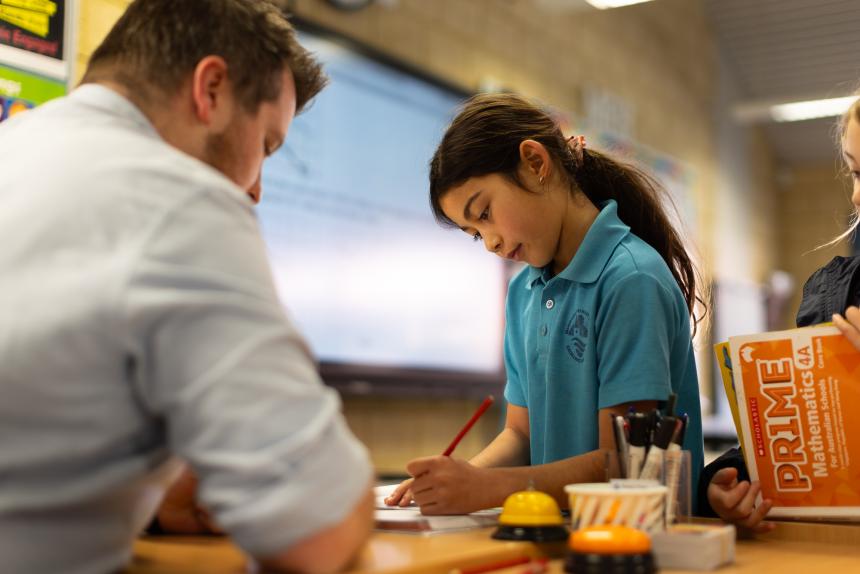
1. Learning is a change in memory.
Students use their working memory – the mental workspace – to acquire and transfer knowledge to long-term memory. Learners develop mental models in their minds to link new information with related ideas they already hold, forming meaningful connections between them. To ensure learning can be applied when needed, it must be thoroughly embedded in long-term memory, and easily retrievable.
2. Working memory has a limited capacity.
To aid knowledge transfer to long-term memory, teachers and educators can reduce cognitive load through techniques like chunking content and a gradual release of responsibility (increasing independence as students develop knowledge and skills), supported by guidance and scaffolds from the teacher. These strategies reinforce retention and make connections in long-term memory stronger, so learning becomes easier to recall and use in the future.
3. Managing the cognitive load of learning tasks is essential.
Students may experience cognitive load when information is new, complex or they receive too much at once. Too much cognitive load (known as cognitive overload) can negatively affect the transfer to long-term memory. When experiencing cognitive overload, students may quickly forget what they’ve been taught, even when they manage to complete a learning task.
4. Students develop mastery of their learning through spaced, varied and repeated practise.
Regular practise consolidates knowledge in long-term memory. The outcome of regular, spaced, varied practise is mastery. Students acquire mastery when they can demonstrate a deep, secure, adaptable long-term understanding of what they’ve learned. Students draw on their knowledge and understanding from long-term memory to generate ideas, solve problems and think critically and creatively.
5. Learning happens best in safe, learning-focused environments.
Student engagement supports success in learning. Students are more engaged in spaces where they feel culturally safe, valued, included and have a sense of belonging. Student cognitive load is better managed in learning-focused environments, where distractions are minimal, and students feel safe.
6. Effective planning involves identifying the knowledge students will acquire and the prerequisite skills needed.
Effective learning for students requires effective planning by teachers. This should include preparing appropriate tasks for acquiring, retaining and consolidating learning, alongside ways to assess and monitor progress.
Some students may require additional instruction, guidance or scaffolding due to language difficulties, processing abilities or for other reasons. Monitoring additional learning needs and supporting the delivery of tiered interventions (such a multi-tiered system of supports) in your school ensures all students have access to the support they require.
By aligning teaching practices with how students learn, teachers, educators and leaders can adopt effective techniques and make well-informed teaching decisions.